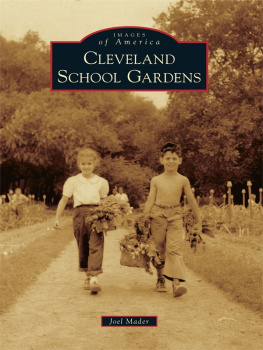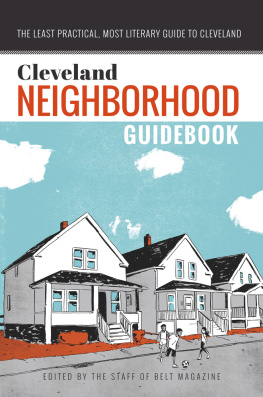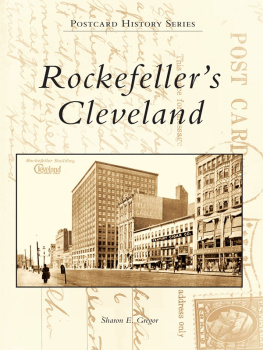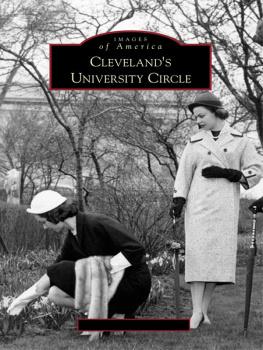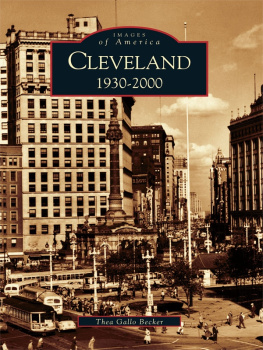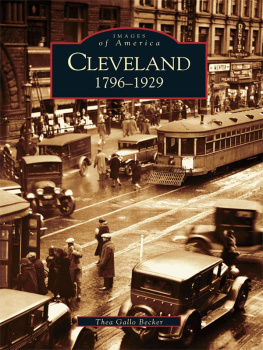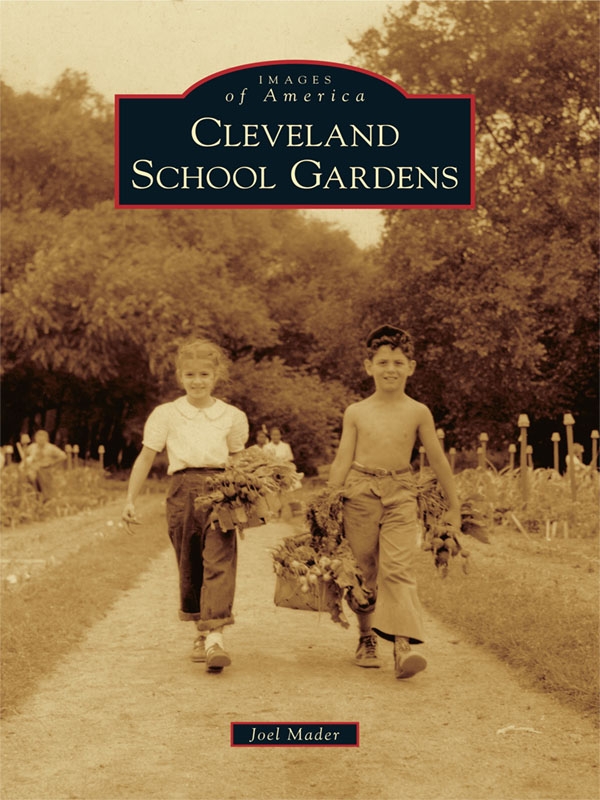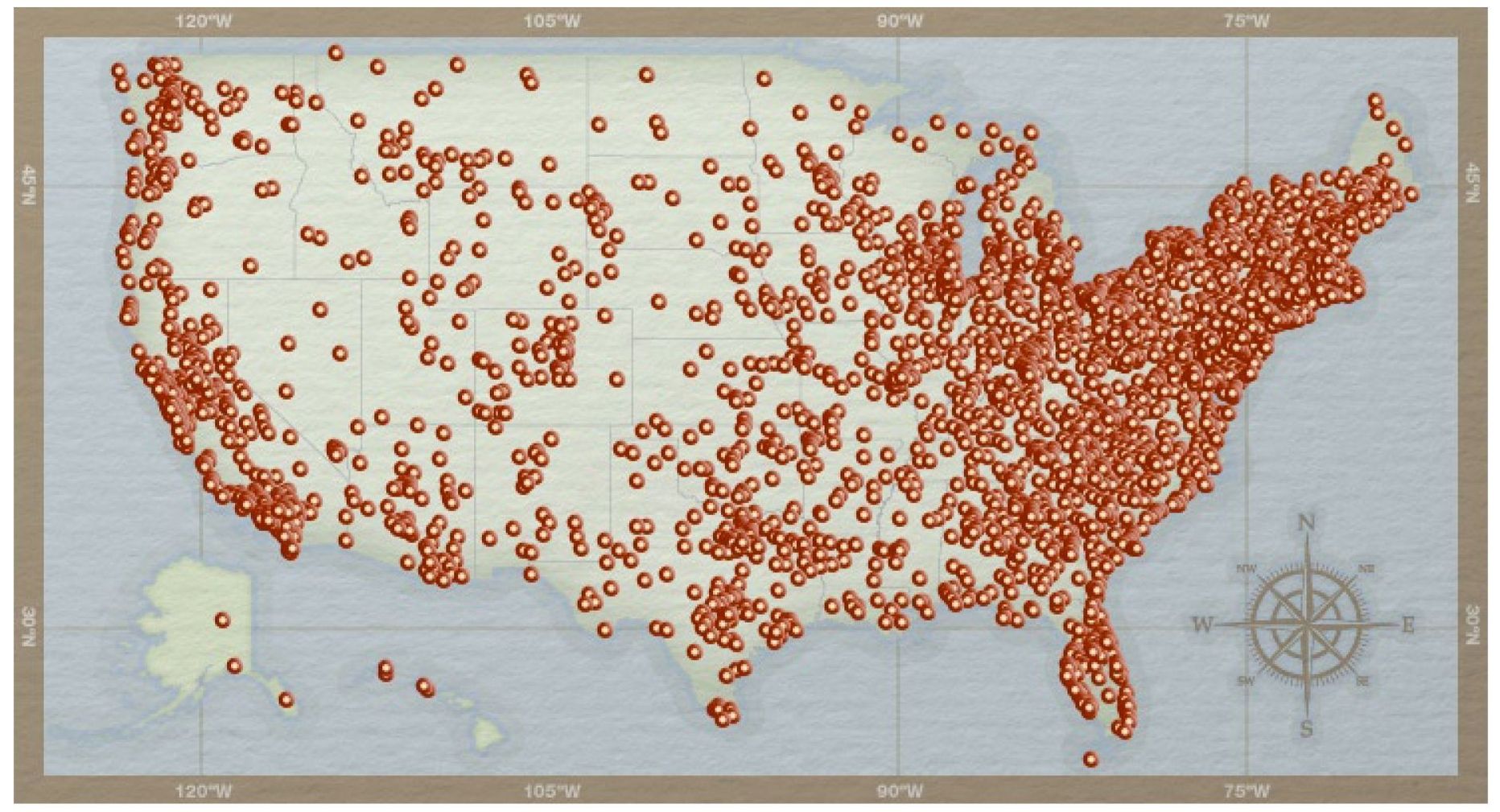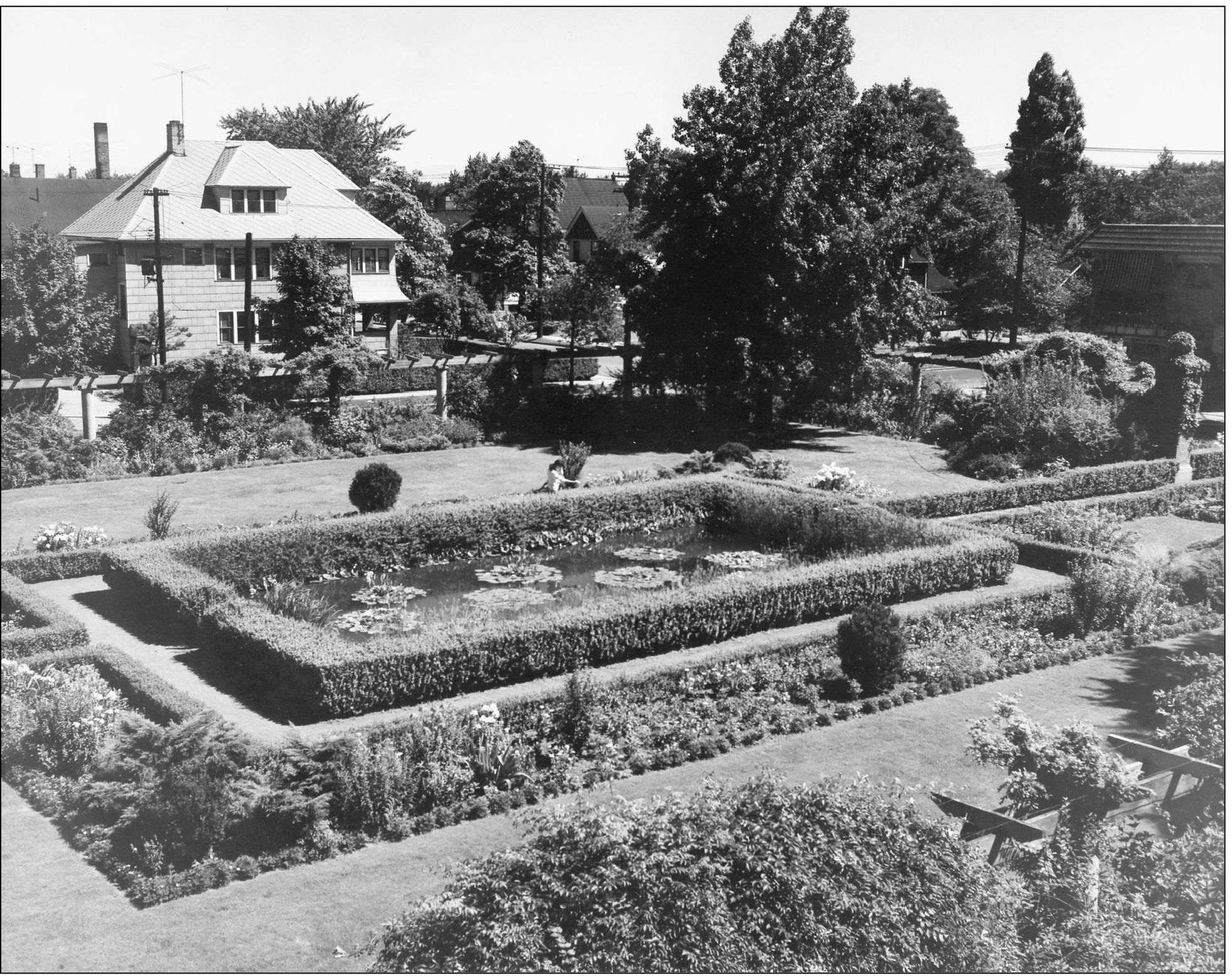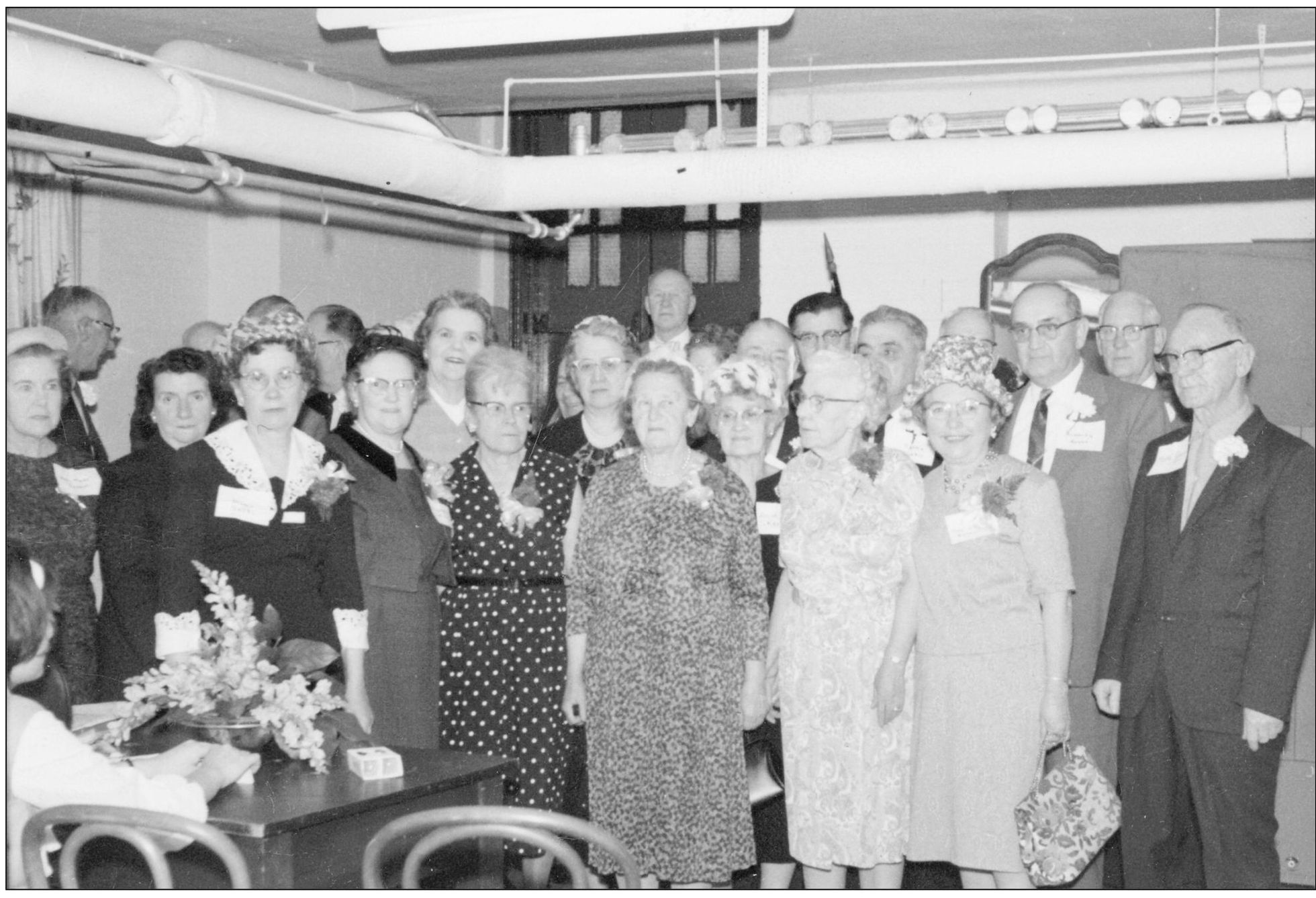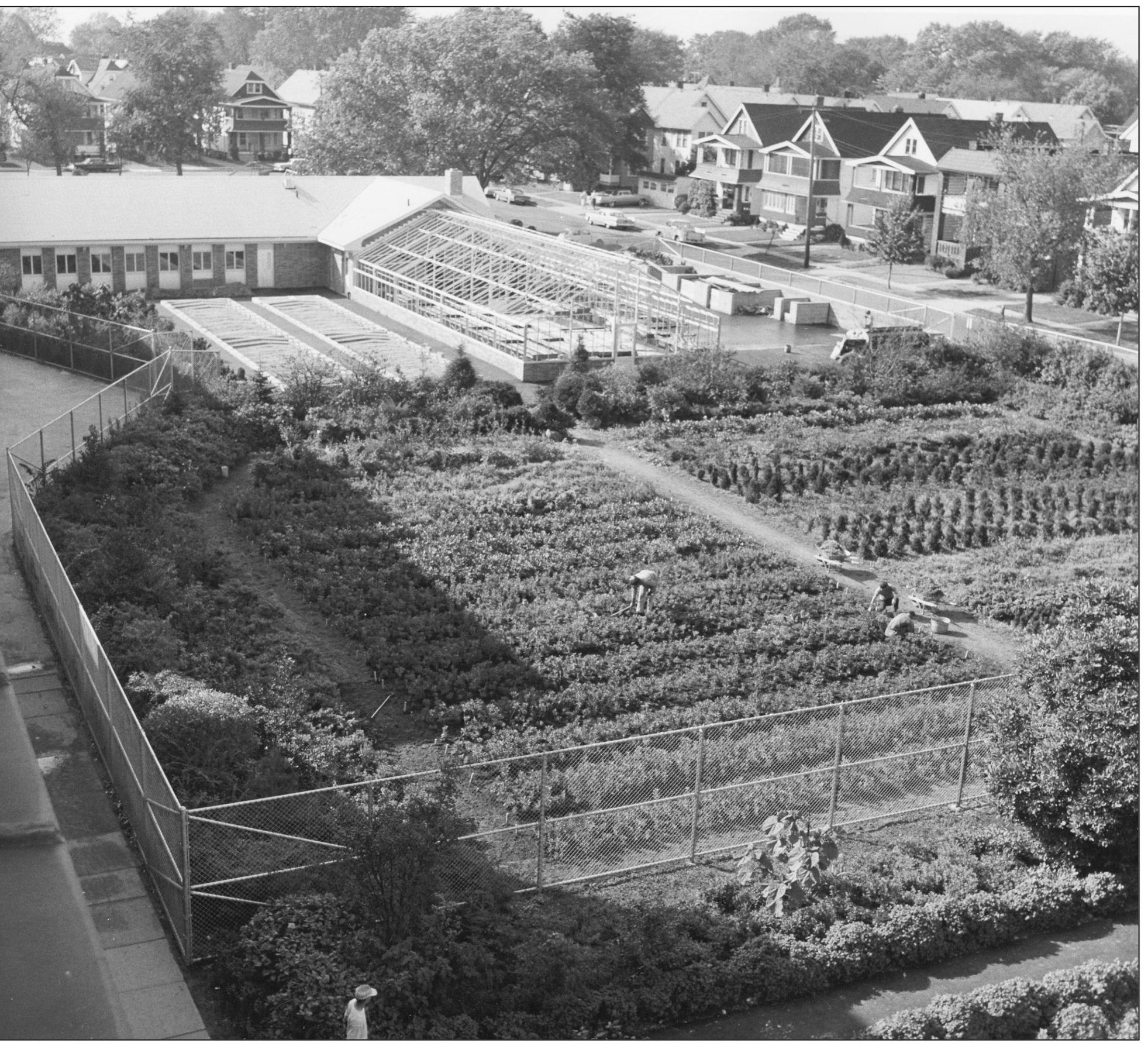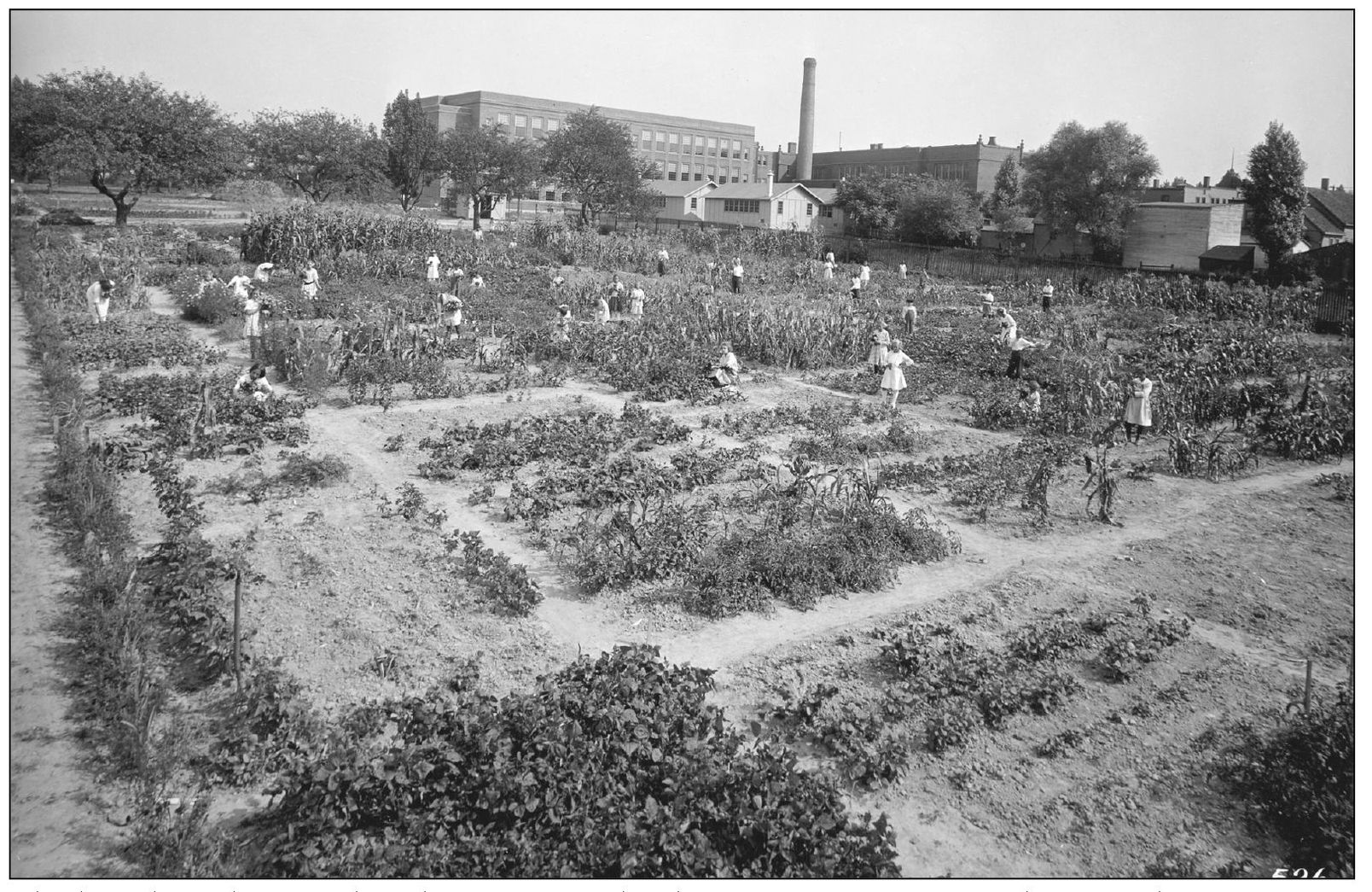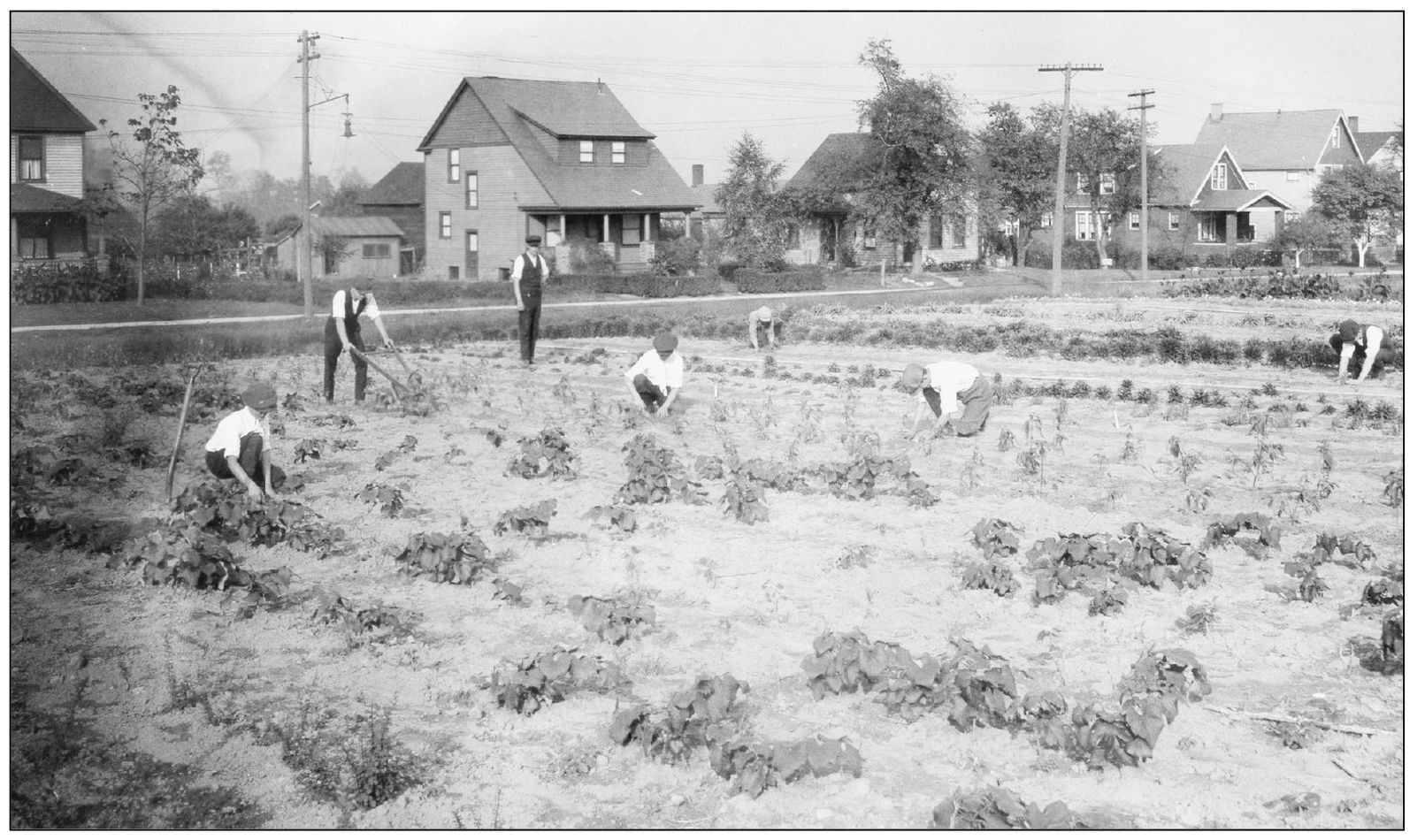One
SCHOOL TRACT GARDENS
The school tract garden program started on a sad note. In 1908, a fire at Lakeview Elementary School in Collinwood (incorporated into Cleveland two years after the fire) killed 172 children, two teachers, and a brave rescuer, resulting in the construction of a memorial garden on the site of the fire. The Memorial Elementary School garden, at 410 East 152nd Street, became a living memorial.
The memorial garden of the Lakeview Elementary School was cultivated on the spot of the original school, the scene of the worst school fire disaster in the country. Some of the children were so badly burned that they could not be identified and were buried at Lakeview Cemetery, which today is considered a historical outdoor horticultural garden and museum. The new Memorial School was erected right next to the memorial garden. The upgrade of fire safety codes and fire drills were a direct result of the tragedy. Although the Home Garden Association began a partnership with the Cleveland Public Schools around the late 19th century and is credited with the cleaning up of alleyways and the beautifying the yards of residences, it was the Memorial Garden that became the foundation for the schools first organized horticulture program.
The scene at the fire was chaos. Parents were only a few feet away from their children but could do nothing. The children died right in front of their eyes. Children were piled like cordwood at the rear exit of the school. Parents would reach in and try to pull the dying out of the flames. The janitor, who lost three of his own children, was found innocent in a trial. It was ultimately determined that a steam pipe ignited a wooden beam in the basement of the school. Survivors of the tragic fire, pictured here, had a reunion on April 27, 1965. School property laid aside specifically for memorials and garden cultivation was a concept that had its beginnings at Memorial School. As the century went on, the idea of introducing plant science to the elementary school student curriculum was adopted. It was not long before the tract gardens started at other elementary schools.
Superintendent Paul Briggs was considered the builder. During his time as the head of the Cleveland Public Schools, he built many new high school and elementary buildings. The school gardens were one of his favorite choices for renewal. Briggs would attend every award program and kept a line-item budget for the school gardens. In the late 1970s, when he saw the across-the-board-cuts that needed to be made, he decided to retire and let another person thin the programs. He always said, The difference between just an ordinary school system and a great one is the ability to organize and implement outstanding, innovative programs. I know of no project more important than the school horticulture program. At Memorial School, he had constructed a garden classroom and a new greenhouse. In this photograph, dated October 3, 1966, the greenhouse is not yet finished. Notice the building materials in the upper corner next to the greenhouse. The shrub garden is directly in front of the complex.
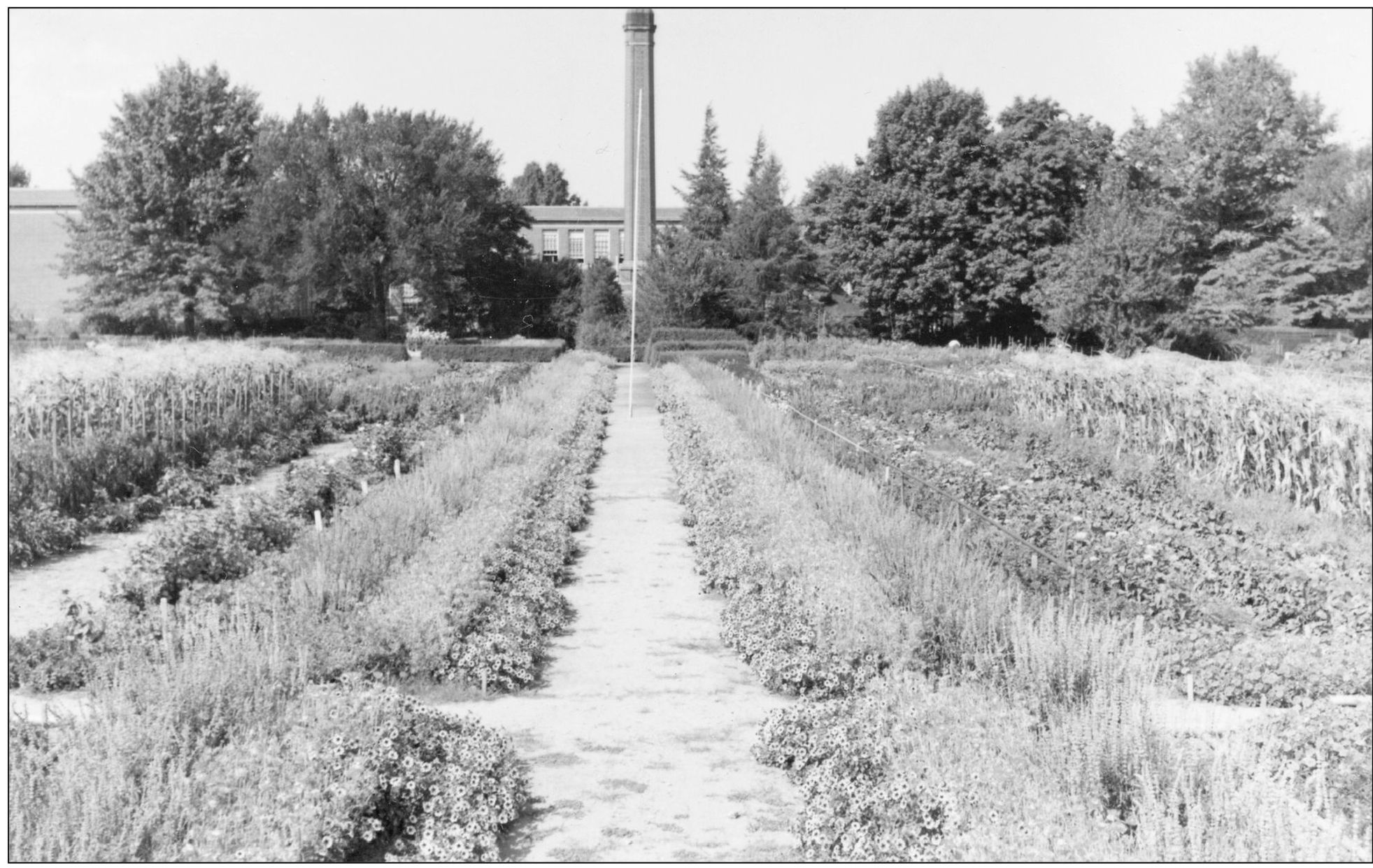
The Benjamin Franklin tract garden, located on 1905 Spring Road, was one of the larger tract gardens. It boasted 6.5 acres and was also one of the longest lasting of all the original public school gardens. Ben was an all-season facility for grades 3 through 12. It had spring-season plots for kindergarten and primary school pupils, as well as sight-saving, blind, and crippled pupils. The tract is now a community garden run by the Old Brooklyn Neighborhood Development Association. The permanent garden design was of Asian construction. Harvey Rice garden (7 acres) and Miles Elementary School garden (3 acres) were the other two large tracts in the city. The first superintendent of Benjamin Franklin was Karl J. Koop, who began at the tract garden in the latter half of the 1920s. He contributed a great deal to the tract garden program, not only in Cleveland, but also in other cities that copied the Cleveland program. His philosophy and many of the techniques he developed back in the 1920s were still practiced into the 1970s.
The board of education bought 11 acres of land from a private farmer who owned Boyert Farm. The farm was divided into two parts: 5.5 acres for a school and 5.5 acres for a garden. The purchase of this land in 1922 began the history of Benjamin Franklin School and the Benjamin Franklin tract garden. At first, the garden was cultivated as a nursery. Plants were grown to beautify schools in the neighborhood. The school was built in 1923 and was both a junior high and an elementary school. Individual garden plots became popular, and children from both public and parochial schools were allowed to rent a plot. The c . 1927 photograph above shows the gardens sectioned into smaller individual plots. The image below, taken earlier, shows a student cultivating the ground with a hand tiller.

